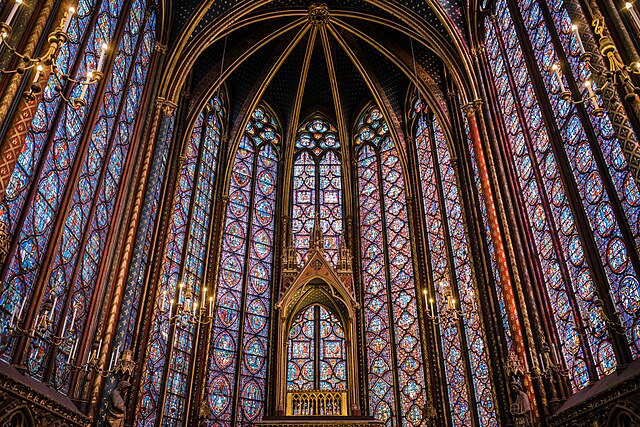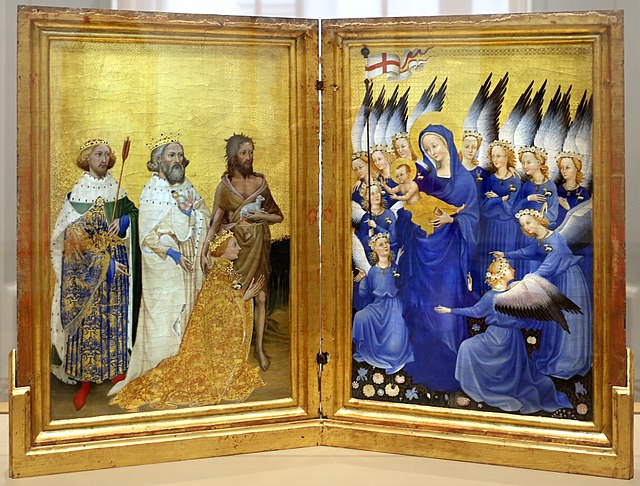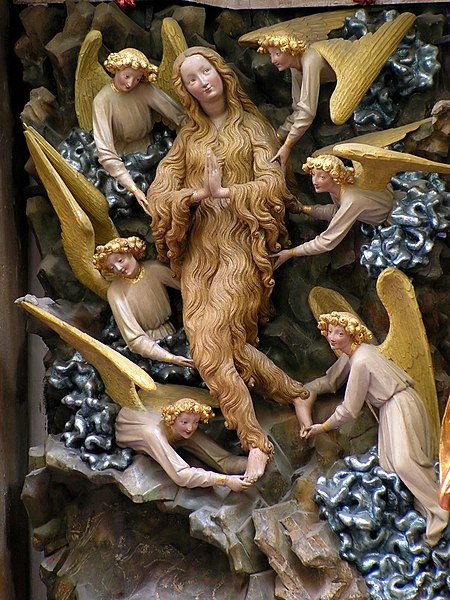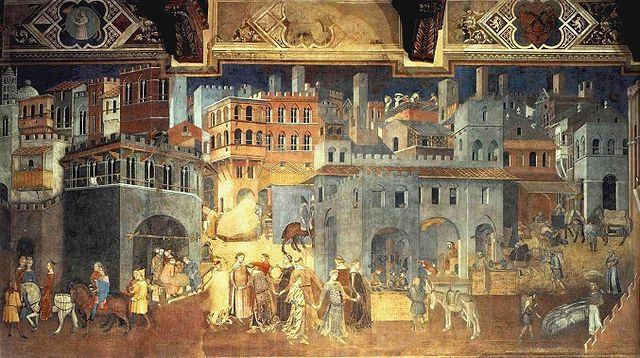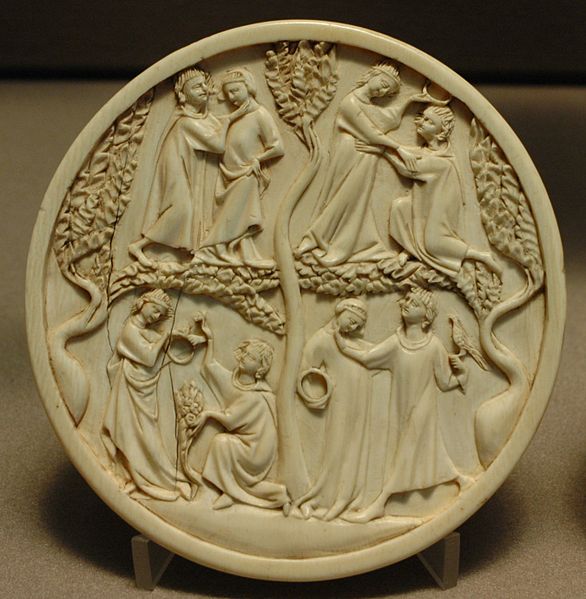Gothic art was a style of medieval art that developed in Northern France out of Romanesque art in the 12th century AD, led by the concurrent development of Gothic architecture. It spread to all of Western Europe, and much of Northern, Southern and Central Europe, never quite effacing more classical styles in Italy. In the late 14th century, the sophisticated court style of International Gothic developed, which continued to evolve until the late 15th century. In many areas, especially Germany, Late Gothic art continued well into the 16th century, before being subsumed into Renaissance art. Primary media in the Gothic period included sculpture, panel painting, stained glass, fresco and illuminated manuscripts. The easily recognizable shifts in architecture from Romanesque to Gothic, and Gothic to Renaissance styles, are typically used to define the periods in art in all media, although in many ways figurative art developed at a different pace.
Image: Cenral tympanum Chartres
Image: Sainte Chapelle Interior Stained Glass
Image: Anonimo inglese o francese, dittico wilton, 1395 99 ca. 01
14th Century International Gothic Mary Magdalene in St. John Cathedral in Toruń.
The medieval art of the Western world covers a vast scope of time and place, with over 1000 years of art in Europe, and at certain periods in Western Asia and Northern Africa. It includes major art movements and periods, national and regional art, genres, revivals, the artists' crafts, and the artists themselves.
Byzantine monumental Church mosaics are one of the great achievements of medieval art. These are from Monreale in Sicily, late 12th century
Detail of The Effects of Good Government, a fresco in the City Hall of Siena by Ambrogio Lorenzetti, 1338.
Scenes of courtly love on a lady's ivory mirror-case. Paris, 1300–1330.
The jewelled cover of the Codex Aureus of St. Emmeram, c. 870, a Carolingian Gospel book.


